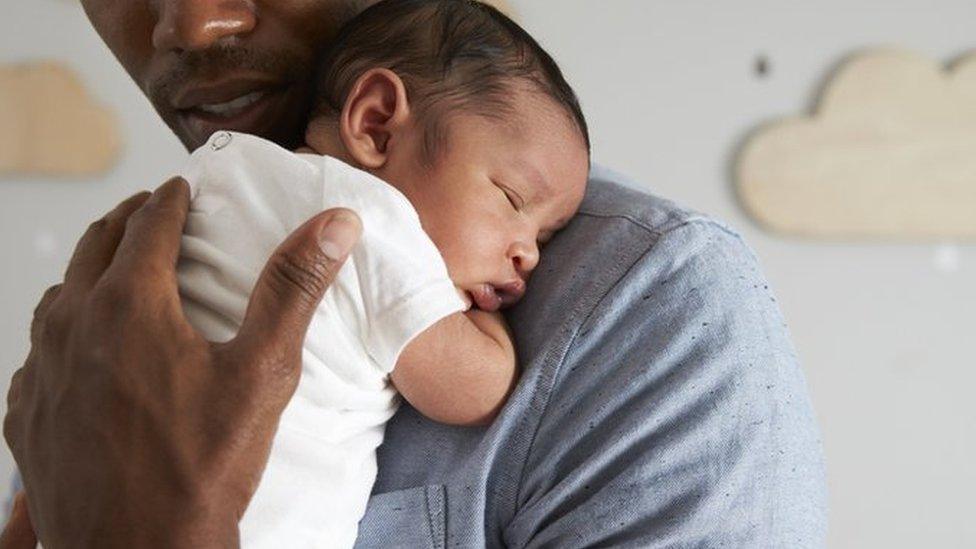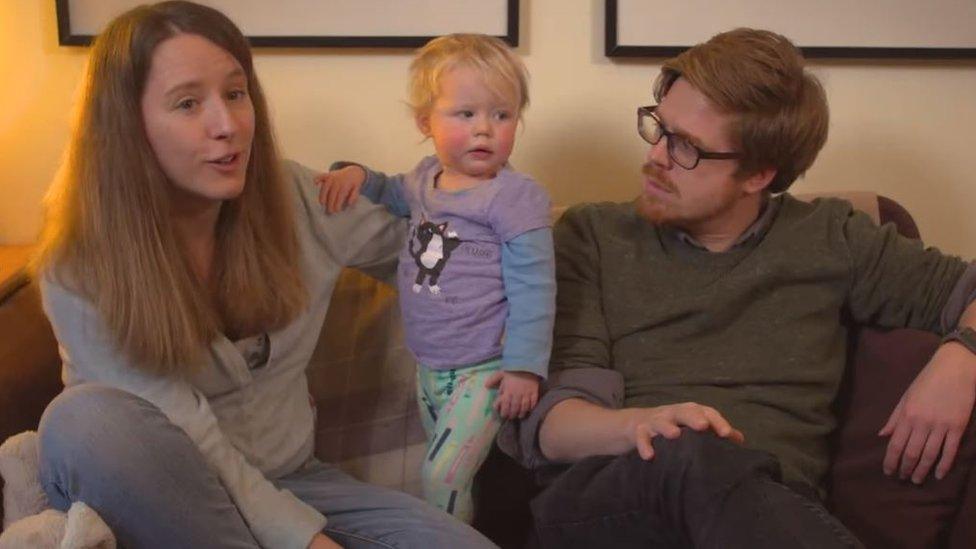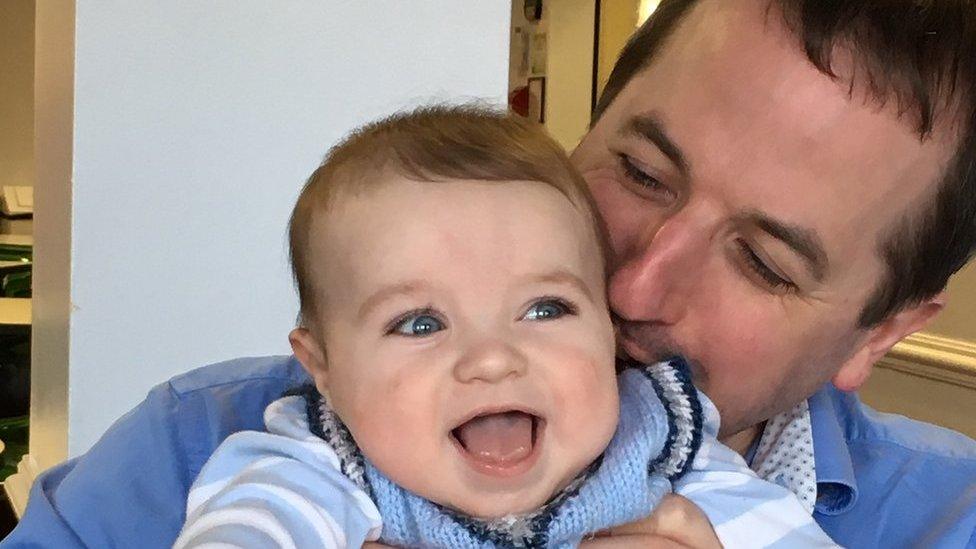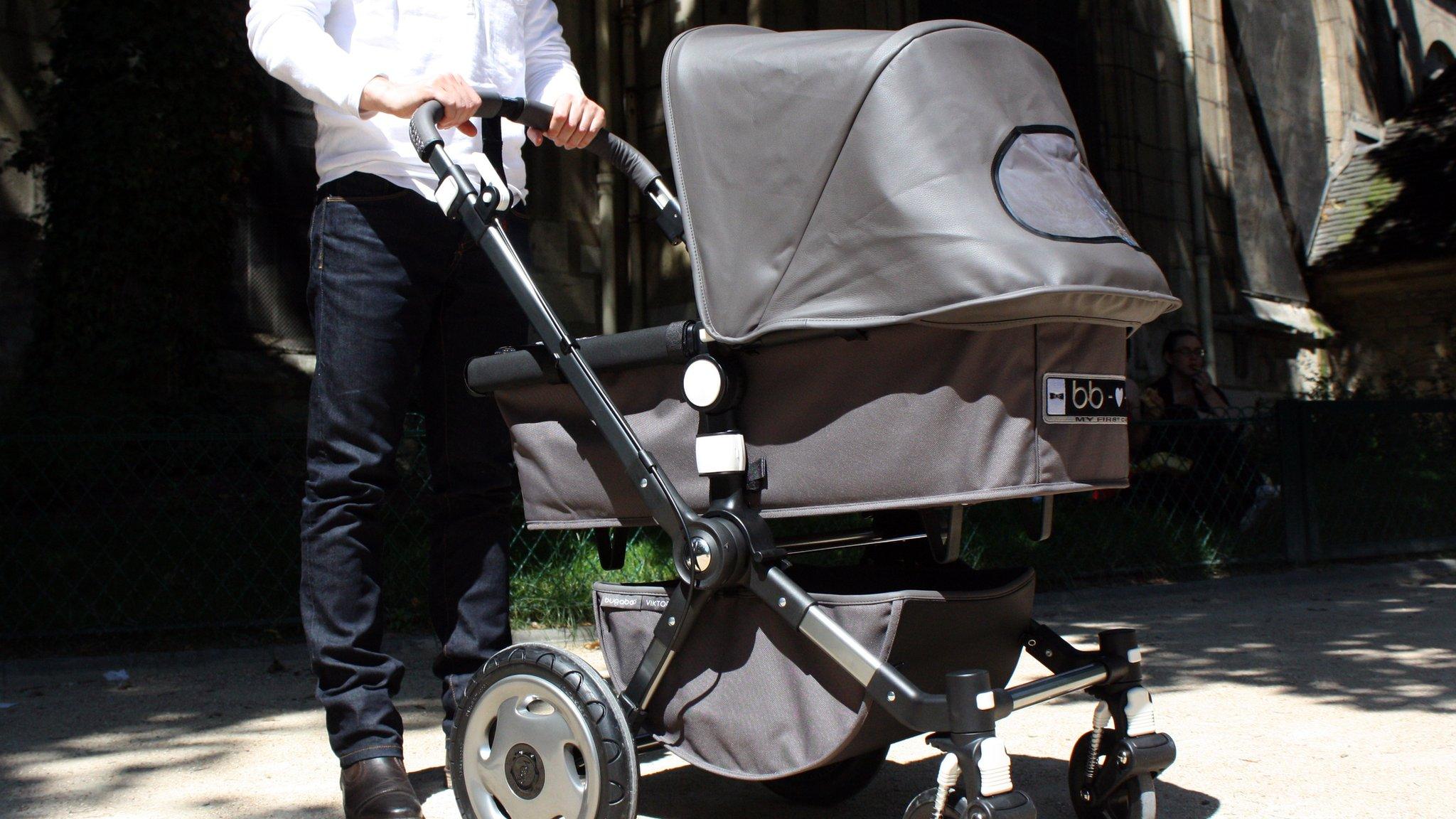Shared parental leave take-up may be as low as 2%
- Published
- comments

A new publicity drive is aiming to encourage higher take-up of shared parental leave.
Around 285,000 couples are eligible every year for shared parental leave, but take-up "could be as low as 2%", the Department for Business said.
Around half of the general public are still unaware the option exists, nearly three years after it was introduced, the government said.
It now plans to spend £1.5m to better inform parents about the policy.
Experts say that as well as a lack of understanding of what is on offer, cultural barriers and financial penalties are deterring some parents from sharing parental leave.
'Share the joy'
The government's campaign, external will encourage parents to "share the joy" through online advertising, social media and on billboards.
Business minister Andrew Griffiths said the policy meant dads didn't have to miss out on "their baby's first step, word or giggle".
"Employers can reap the benefits too. We know that flexibility in work is proven to create happier, more loyal and more productive workforces," he said.

What is shared parental leave?
Shared parental leave (SPL) was introduced in April 2015
It allows parents to share 50 weeks of leave and 37 weeks of pay after they have a baby
Parents can take time off separately or can be at home together for up to six months
SPL is paid at £140.98 per week or 90% of your average earnings, whichever is lower

Tom Markwell and Leila Reyburn, who work in the charity sector in London, said shared parental leave offered them greater flexibility.
After they had their daughter, Pearl, in 2016, Leila took the first 10 months off work to care for her. Tom then spent two months at home.

They say it gave Tom the chance to bond more closely with Pearl, while Leila was able to take up the opportunity for a promotion at work.
The government originally predicted between 2% and 8% of eligible couples would take SPL during the first few years of the new policy and says it still expects take-up to be within that range.
But a survey by Working Families, a charity that campaigns on work-life balance issues, said a survey it conducted last year suggested raising awareness was only part of the solution.
Why aren't fathers taking it up?
Working Families chief executive Sarah Jackson said some families could not afford for fathers to take parental leave.
"Of those fathers who said they wouldn't use the scheme, more than a third said this was because they couldn't afford to," she said.
"Those employers that can afford to should go beyond the minimum pay for SPL."
Many fathers had not been in their jobs long enough to qualify for SPL, she added.
"If the Government is serious about equality at work and tackling the gender pay gap, it should consider also introducing a properly paid, standalone period of extended paternity leave for fathers."
Research conducted by law firm EMW last year, external, based on a Freedom of Information request, suggested only 8,700 couples took advantage of the scheme between April 2016 and March 2017. EMW calculated that was 1% of eligible couples while the Department for Business said it was around 3% of those eligible.
EMW suggested low take-up was partly due to the cultural stigma for men of taking time off work and concerns that they might come across as less committed to their job if they ask for leave.
The Department for Business said it was normal for the policy to take some time to bed in and that the scheme would be formally evaluated later this year.
- Published18 June 2017

- Published20 December 2017

- Published24 November 2017

- Published12 May 2017

- Published5 April 2015
